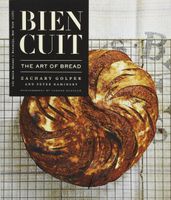Advertisement
Buckwheat
Appears in
By Zachary Golper and Peter Kaminsky
Published 2015
Buckwheat isn’t a grain in the conventional sense of the term. Rather, it’s the seeds from a plant related to rhubarb and sorrel. Historically, buckwheat flour was used to fortify dough when wheat was at a premium. Today, buckwheat is mostly used as a cover crop that helps replenish nutrients in the soils of fields where wheat and other grains are grown. I particularly like the idea of using a plant that helps soil stay fertile. Happily, buckwheat also imparts some wonderful and unique flavor characteristics to bread. When fermented, it contributes deep, nutty aromas and light alcohol notes without increasing acidity. As with wheat and rye flours, there are lighter and darker forms of buckwheat flour, but in this case the color has little effect on nutritional value. I’ve also found that it doesn’t affect how buckwheat flour interacts with other ingredients.



